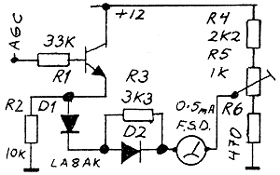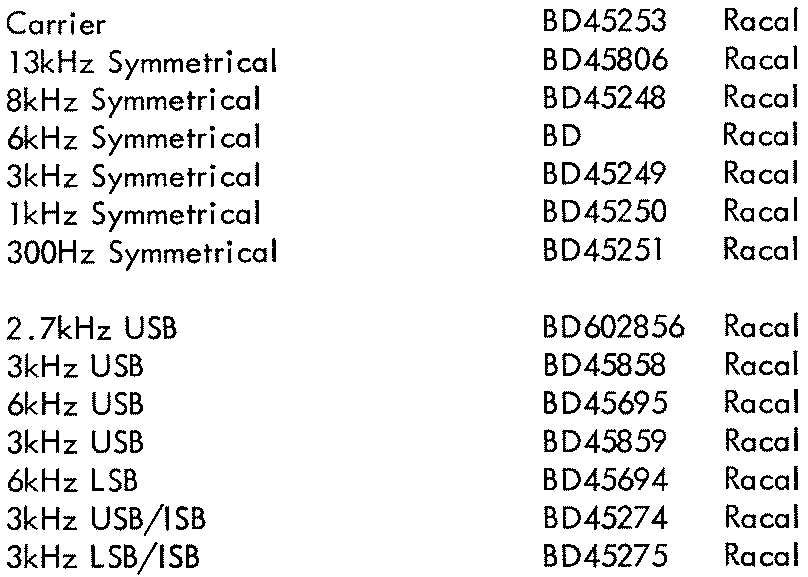
b88. Atlas 210X, Racal RA1772

Correcting Atlas 210-X S-meter calibration.
Many S-meters are useless, here is shown modified S-meter from
Atlas 210-X.
It was 1dB pr S-unit from S1-S7, in fact only one actual S-unit!
D1 is used to define the
threshold, and the combination of a diode a resistor (D2/R3)
reduce deflection when the
meter just deflects.
In the actual case it was possible to achieve a reading of 4-5dB
per s-unit.
D1= 1N34A, D2=1N4148, transistor could be a discrete device like
BC547 or 2N2222,
but for Atlas 210X it is part of an integrated circuit.
Reference: Present-day receivers - some cures and
cures, Ham Radio dec.1977 pp10-18
(W0JGP, K8RRH) page 17: The Atlas 210X without its noise blanker
operational, has a better than average
dynamic range of about 90dB, which would be even better if its
double-balanced mixer were properly terminated
above the IF frequency (*). This could be accomplished with the
use of a diplexer, as descrided by Wes Hayward
or with a power jfet, as related by U L Rohde. There is one
limitation in the 210X that cannot be easily remedied,
however; its potential strong-signal handling capabilities cannot be fully realized due to its noisy
conversion
oscillator. Since this oscillator has noise sidebands that are
only 65dB down 10kHz on each side of its
center frequency, all signals passing through the mixer will take
similar noise sidebands. Consider a
strong station near a desired signal that is weaker in amplitude.
Reciprocal mixing of oscillator and
noise can cause noise sidebands to be transferred to the strong
nearby station and cause interference
to the desired signal. Thus even if the i-f filter's ultimate
rejection is actually realized in the receiver circuitry,
which is doubtful in practice, this high level of rejection can
be negated by wide-band oscillator noise.
So while it takes two strong signals to cause IMD which can
interfere with weak signal reception, a noisy
oscillator and a strong signal can cause the same unfortunate
results.
The noise blanker in AStlas 210X also degrades its dynamic range,
diminishing the advantage
of the double-balanced passive mixer. The 210X transceivers we
tested had a dynamic range
of between 73 and 81dB, depending on the boand selected. When the
blanker was turned on,
these numbers dropped by 3dB
Note*) Ulrich Rohde DJ2LR, "High dynamic range receiver
input stages" ham radio, october 1975, page 26.

Racal RA1772 IF xtal filters.
It seems very difficult to obtain the
1.4MHz filters. They were offered at low price from Birkett few
years ago, and if you are planning to buy such receiver you
should be looking for an xtal filter to receive LSB as soon as
possible. Note that an USB-filter will give you reception on LSB
and vice versa. 2.7kHz USB filters are very rare, and I had to
use 3kHz ISB filter for 80/40m, but they are indeed very broad.
Updated: 2004.10.18